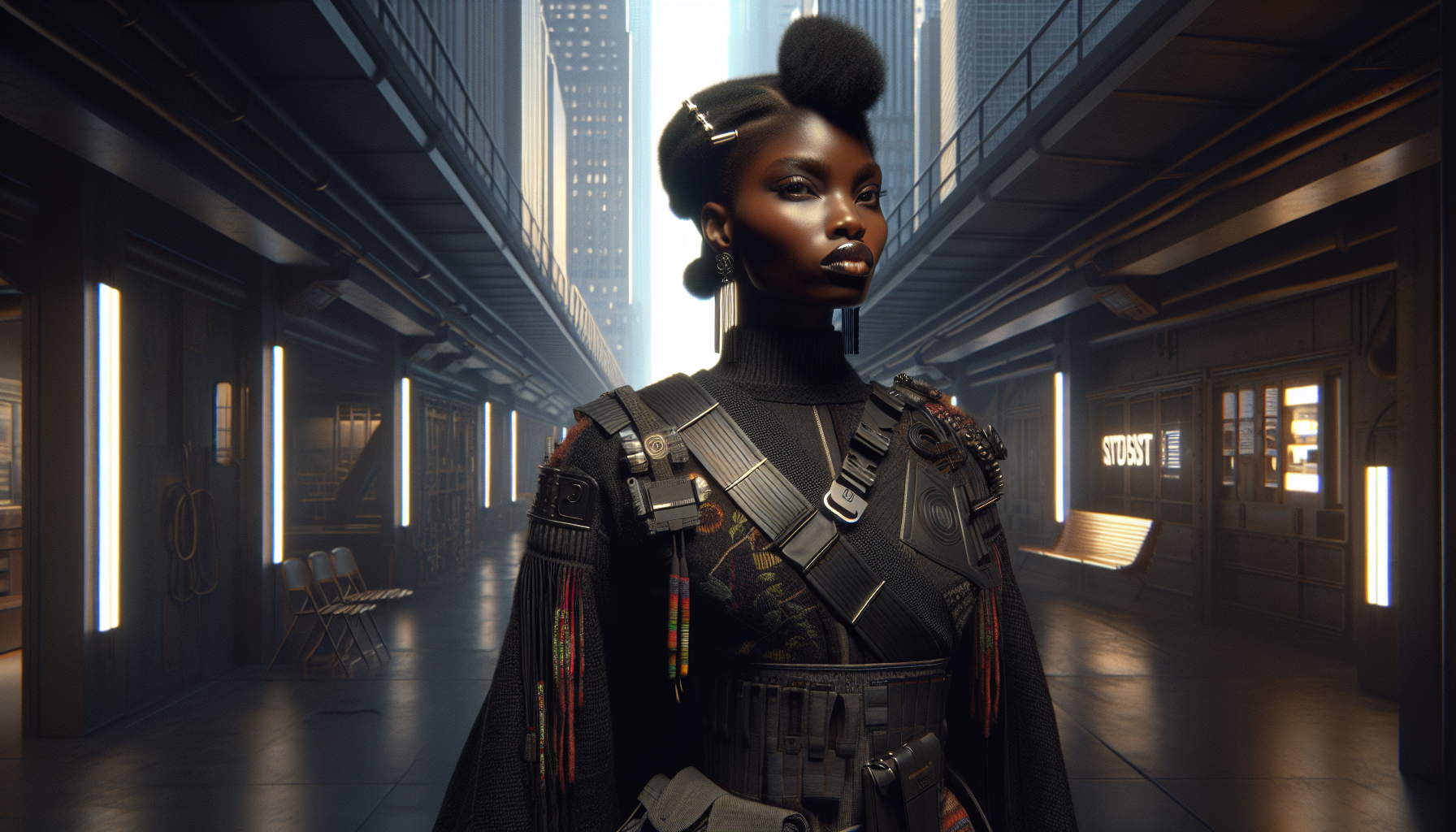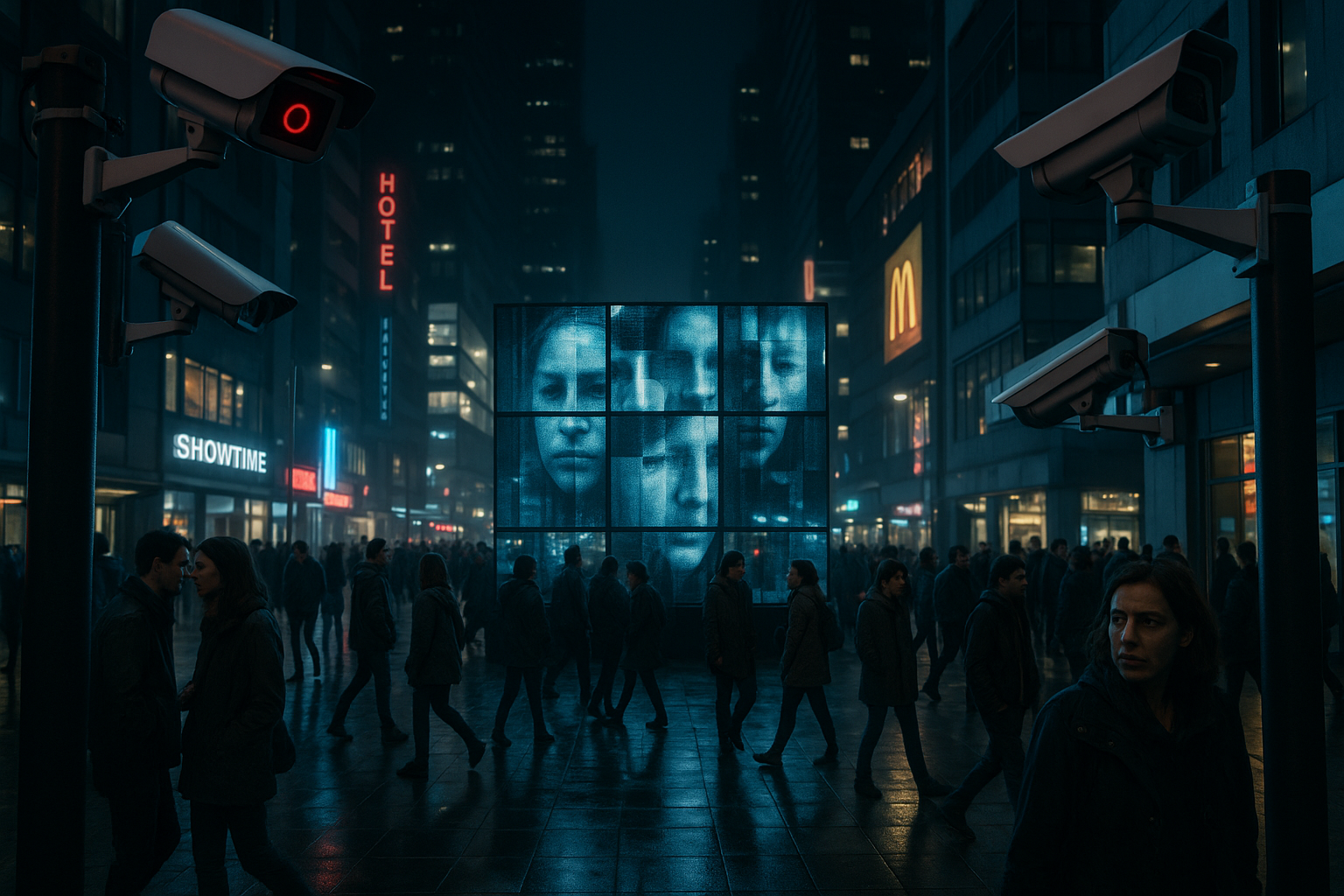Anúncios
In an era where the global landscape is in constant flux, the fashion industry has emerged as a powerful platform for expression, rebellion, and resilience. “Defiantly Stylish: The Power of Resistance Fashion in a World of Uncertainty” delves into the dynamic intersection of style and social commentary, offering a fresh perspective on how clothing can be a bold statement of defiance. At a time when uncertainty looms large, fashion is not just about aesthetics; it is a medium through which individuals can voice their dissent and champion their beliefs. The rich tapestry of resistance fashion weaves together history, culture, and activism, creating a vivid portrait of how style can serve as both armor and art in tumultuous times.
Anúncios
From the suffragette white dresses of the early 20th century to the punk rock leather jackets of the 1970s, fashion has long been a mirror reflecting societal change and a tool wielded by those seeking to challenge the status quo. Today, the stakes are higher than ever, and designers are harnessing their creativity to address issues like climate change, racial inequality, and political unrest. This article will explore how contemporary movements such as Black Lives Matter and the fight for climate justice are influencing designers and reshaping runways across the globe. With a closer look at the symbolism behind iconic pieces and the stories of the designers who dare to defy norms, we aim to uncover the transformative power of fashion in advocating for change.
Anúncios
The Evolution of Resistance Fashion
Fashion has always been a reflection of societal dynamics and individual identities. When it comes to resistance fashion, this concept takes a deeper and more rebellious turn. From punk rock styles to the hip-hop culture, fashion has continuously served as a platform for defiance, challenging norms and advocating for change. Understanding the evolution of resistance fashion is essential to appreciate how it has shaped and continues to influence modern style.
The roots of resistance fashion can be traced back to several key movements and subcultures. During the 1970s, punk fashion emerged as a symbol of anti-establishment sentiments. With its bold use of safety pins, leather jackets, and ripped clothing, punk style was a direct challenge to the status quo. Similarly, the 1980s saw the rise of hip-hop fashion, which not only expressed individualism and creativity but also addressed issues of race and inequality. These movements utilized clothing as a form of protest and self-expression, making a statement without uttering a single word.
The evolution of resistance fashion is not confined to the Western world. In other parts of the globe, traditional garments have been repurposed to convey dissent and cultural pride. For example, the resurgence of the keffiyeh in the Middle East is both a nod to heritage and a symbol of political resistance. In Africa, wax print fabrics have been used to challenge colonial narratives and promote indigenous identity. This global perspective demonstrates the universal power of fashion as a tool for resistance.
Resistance Fashion in the Modern World
In today’s world, resistance fashion continues to thrive, adapting to new challenges and contexts. With the rise of social media and digital platforms, fashion has become an even more powerful medium for resistance. Designers and brands are leveraging these platforms to advocate for social justice, environmental sustainability, and equality. Whether through viral hashtags or powerful runway shows, fashion is playing a crucial role in driving conversations and inspiring change.
One of the most notable aspects of modern resistance fashion is its focus on sustainability. As awareness about the environmental impact of the fashion industry grows, many designers are turning to sustainable practices to make a statement against fast fashion. This includes using recycled materials, promoting ethical labor practices, and creating timeless pieces that transcend trends. By doing so, these designers are not only challenging the industry’s norms but also encouraging consumers to adopt more mindful purchasing habits.
Gender and body inclusivity are also central to contemporary resistance fashion. Brands are increasingly celebrating diversity by featuring models of all shapes, sizes, and backgrounds. This shift is a direct response to the industry’s history of exclusion and marginalization. By embracing inclusivity, resistance fashion is helping to redefine beauty standards and empower individuals to embrace their unique identities.
Resistance Fashion Icons
Throughout history, several fashion icons have emerged as symbols of resistance. These individuals have used their style to challenge societal norms and promote change. From David Bowie’s androgynous looks to Madonna’s boundary-pushing fashion statements, these icons have left a lasting impact on the industry and continue to inspire new generations of fashion rebels.
Another notable figure is Vivienne Westwood, whose punk-inspired designs and environmental activism have cemented her status as a pioneer of resistance fashion. Through her work, Westwood has consistently challenged the conventions of the fashion industry, advocating for ethical practices and raising awareness about climate change.
The Impact of Technology on Resistance Fashion
Technology has revolutionized the fashion industry, offering new opportunities for resistance fashion to flourish. Social media platforms such as Instagram and TikTok have become vital tools for designers and activists to share their messages and connect with a global audience. These platforms allow for the rapid dissemination of ideas, making it easier for resistance fashion to gain traction and inspire change.
Furthermore, advancements in technology have enabled the development of innovative materials and production methods. From 3D printing to digital fabric printing, these technologies are being used to create sustainable and unique designs that challenge traditional fashion paradigms. By incorporating these technologies, resistance fashion is pushing the boundaries of creativity and redefining what is possible in the world of style.
Technology has also facilitated greater transparency in the fashion industry. Consumers now have access to information about a brand’s sourcing and production practices, allowing them to make informed decisions and support ethical brands. This shift towards transparency is a testament to the power of technology in driving accountability and promoting resistance against exploitative practices.
Case Study: The Intersection of Fashion and Activism
One of the most compelling examples of the intersection between fashion and activism is the Black Lives Matter movement. The movement has inspired numerous designers and brands to create collections that highlight racial injustice and promote equality. These fashion pieces serve as a form of protest, raising awareness and encouraging dialogue about important social issues.
Moreover, the use of fashion as a tool for activism extends beyond clothing. Accessories such as masks and pins have also been used to convey messages of resistance. These items serve as powerful symbols of solidarity and provide individuals with a way to express their support for various causes.
| Resistance Fashion Element | Symbolism | Example |
|---|---|---|
| Punk Style | Anti-establishment, Rebellion | Safety pins, Leather jackets |
| Hip-Hop Fashion | Cultural Pride, Individualism | Baggy pants, Oversized jewelry |
| Keffiyeh | Cultural Identity, Political Resistance | Middle Eastern traditional wear |
Want to see resistance fashion in action? Check out this insightful video on how fashion serves as a form of protest and self-expression: Defiantly Stylish: Fashion as Resistance – [Channel Name]
Challenges and Opportunities in Resistance Fashion
Despite its potential to drive change, resistance fashion faces several challenges. The fashion industry is still dominated by fast fashion brands that prioritize profit over ethics. These companies often exploit workers, use unsustainable materials, and contribute to environmental degradation. Overcoming these challenges requires a concerted effort from both consumers and industry leaders to support ethical and sustainable practices.
However, resistance fashion also presents numerous opportunities for innovation and growth. As consumers become more conscious of their purchasing decisions, there is a growing demand for brands that align with their values. This shift presents an opportunity for designers to create unique, ethically produced pieces that resonate with consumers on a deeper level. Additionally, collaboration between fashion brands and social movements can amplify the impact of resistance fashion, reaching wider audiences and fostering meaningful change.
In conclusion, resistance fashion remains a powerful tool for challenging norms and advocating for change. By embracing sustainability, inclusivity, and innovation, the fashion industry has the potential to drive significant progress in the fight for social and environmental justice. As consumers, we have the power to support this movement by making informed choices and using our voices to demand a more ethical and equitable fashion industry.
- Embrace sustainable fashion practices.
- Support brands that prioritize ethical production.
- Use fashion as a tool for self-expression and activism.

Conclusion
In conclusion, “Defiantly Stylish: The Power of Resistance Fashion in a World of Uncertainty” delves into the profound intersection of fashion, culture, and social resistance. Throughout this exploration, we have seen how fashion transcends its role as mere apparel to become a potent tool of expression and empowerment. From historical movements to contemporary times, clothing has been used to defy norms, challenge authority, and convey powerful messages. This reflects a deep-seated human need to assert individuality and champion causes in times of turmoil and change.
One of the main points we discussed is how fashion acts as a mirror to societal shifts. When political or social climates become oppressive, individuals and groups often turn to fashion as a means of subtle or overt protest. The punk movement of the 1970s, the suffragettes’ use of fashion in the early 20th century, and the Black Lives Matter-inspired designs of recent years all demonstrate how style can serve as a formidable form of resistance. Fashion allows individuals to communicate their beliefs and support for social justice movements without uttering a word, leveraging its visibility to foster awareness and inspire change.
Moreover, we explored the concept of “sartorial defiance” and how it offers a platform for marginalized communities to assert their identity and resist assimilation. In a world that frequently demands conformity, the choice of attire can be a rebellious act that challenges stereotypes and societal expectations. For instance, gender-fluid fashion challenges the binary norms of male and female clothing, offering an inclusive perspective that honors individual identity and expression. Similarly, indigenous fashion designers incorporate traditional elements into modern designs, both preserving and celebrating their cultural heritage.
Another significant aspect we examined is the role of technology and social media in amplifying the impact of resistance fashion. Platforms like Instagram, Twitter, and TikTok have democratized fashion, allowing anyone with internet access to become a style icon or an activist. The digital landscape enables rapid dissemination of ideas and trends, helping resistance fashion to reach a global audience. Online campaigns and viral hashtags can propel local fashion statements onto the world stage, uniting people across borders in shared causes and inspirations.
Importantly, the economic influence of resistance fashion cannot be overlooked. Brands that align with social movements often see increased loyalty and support from consumers who prioritize ethical and sustainable practices. This growing demand for accountability is prompting the fashion industry to reevaluate its role in social change, leading to more collaborations with activists and a greater emphasis on producing goods that reflect consumer values.
As we wrap up our discussion, it is crucial to acknowledge the enduring power of fashion as a vehicle for social commentary and change. In an ever-evolving world fraught with challenges, the ability to adapt and innovate through fashion offers hope and inspiration. It empowers individuals to not only navigate uncertainty but to do so with courage and conviction.
We invite you, the reader, to reflect on the insights shared here and consider how fashion plays a role in your own life. Are you using your clothing choices to make a statement or support a cause you believe in? We encourage you to engage with this dynamic conversation by sharing your thoughts and experiences in the comments below. Your voice is vital in this ongoing dialogue about fashion and its power to influence the world.
Furthermore, consider sharing this article with friends and family who may also find value in exploring the transformative potential of resistance fashion. By spreading awareness and fostering discussion, we can collectively harness the power of style to create a more inclusive and equitable world.
Finally, if you’re inspired to delve deeper into the topic, explore resources such as the Fashion and Race Database and The Business of Fashion for more insights into the intersection of fashion, culture, and activism. Let’s continue to champion the power of fashion in shaping a better tomorrow.
Toni Santos is a visual storyteller and artisan whose work reimagines fashion in the aftermath of civilization. Exploring the aesthetics of survival, decay, and resilience, Toni crafts wearable narratives shaped by a post-human world — where utility meets myth, and remnants become ritual.
Drawn to the raw beauty of collapse and adaptation, Toni’s creations emerge from imagined futures and forgotten pasts. Torn fabrics, corroded metals, and salvaged textures form the foundation of a style that speaks not just to what is worn — but to what has endured. Each piece tells a story of transformation, of identity reshaped by ruins and time.
Through garments, accessories, and visual compositions, Toni constructs a language of dress where fashion is not decoration but declaration — a symbol of survival, memory, and the human spirit persisting in desolation. With a background in visual design and handcrafted techniques, Toni blends precision with provocation. His works are tactile philosophies, designed to be worn, felt, and remembered.
As the creative voice behind Vizevex, Toni shares a vision of fashion as post-civilization mythology — offering curated collections and visual essays that explore the line between relic and garment, artifact and identity.
His work is a tribute to:
The resilience encoded in fabric and form
The symbolic armor we craft in the face of extinction
The beauty found in fragmentation, rust, and reassembly
Whether you are an artist, a futurist, or someone drawn to the aesthetics of survival and reinvention, Toni invites you into a world where fashion becomes memory — one stitch, one scar, one future at a time.





